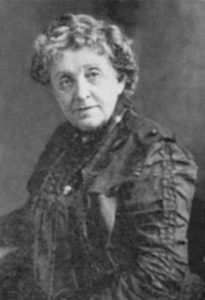1 Comment
Updated on 16 Απριλίου, 2024
The invention of the dishwasher
Here is a post on the invention of the dishwasher machine. As you might have guessed, the person who first came up with the idea and the design of a dishwasher was a woman. Her name was Josephine Garis Cochran.
...
In 1883, at the age of 45, an unemployed Josephine Cochran decided, “If nobody else is going to invent a dishwashing machine, I’ll do it myself!" 
About a month later, her alcoholic husband died.
Rather than abandon her idea, her husband’s death prompted her to turn her idea into her vocation.
There were few opportunities for 19th century women to invent or innovate. Josephine had to battle not only her gender, but her lack of professional training.
Initially, the men she hired to build a prototype in the shed behind her house refused to follow her design, believing it had mistakes.In her own words: "I couldn’t get men to do the things I wanted, in my way, until they had tried and failed in their own, and that was costly for me. They knew I knew nothing, academically, about mechanics, and they insisted on having their own way with my invention until they convinced themselves my way was the better, no matter how I had arrived at it.”
Eventually, Josephine hired a young mechanic, George Butters, who built her design the way she wanted it. Mr. Butters became one of Ms. Cochrane’s first employees and eventually ran Crescent’s dishwasher factory.
Several men had attempted to create an automated dishwasher before Josephine built her first prototype. However, they relied on brushes to scrub the dishes and required users to externally heat water and pour it into the machine. Josephine’s primary breakthrough was the use of hot, pressurized water injected directly into her device. Her original design also included separate trays for cups, plates and silverware, a design feature that remains in use to this day.
Ms. Cochrane learned the hard way that the first invention doesn’t always win the day. Her grandfather, John Fitch, infamously invented the steamboat but failed to make money from it, losing out to the charismatic and socially connected Robert Fulton. Unable to raise money in traditional ways, Josephine had to find non-paid forms of advertising.
In the end, she managed to showcase her creation in the Machinery Hall exhibit at the 1893 Chicago World’s Fair, , alongside inventions from Thomas Edison, Alexander Graham Bell and Whitcomb Judson, inventor of the zipper. She won a top prize for how well her device was made and how useful it was. This achievement helped her company a lot.
Josephine filed her initial patent in 1885 as, “J.G. Cochran,” fearing her application would be denied if the examiner realized it was submitted by a woman.
After her patent was granted in 1885, she founded the Crescent Washing Machine Company and began selling her invention.
"If I knew all I know today, when I began to put the dishwasher on the market, I never would have had the courage to start. But then, I would have missed a very wonderful experience.”
Once her patent was protected, she found that selling her invention as a single businesswoman was even more daunting. It was unusual for middle age women of her social status to travel without a man by their side.
Years later, Josephine recounted her first sale, “… (it was) almost the hardest thing I ever did... You cannot imagine what it was like in those days. I had never been anywhere without my husband or father... I thought I should faint at every step, but I didn’t, and I got an $800 (~ $21,000 in 2020) order as my reward.”
Josephine created her device to relieve women of the never-ending and thankless task of washing dishes, not to save hotels and restaurants money.Yet, she realized that the home market was not ready to adopt her invention. During the mid-19th century, American’s didn’t appropriately value women’s household labor.
Instead of sticking with a plan that wasn't working, she changed how she presented her product. This happened because people became more concerned about keeping things clean following the discovery of viruses during the 1890s. Also, it became more expensive to hire workers to wash dishes at hotels and restaurants. More and more Americans started eating out and staying at hotels, which helped her product become popular.
Many inventions are initially too large, complex and expensive for consumer use. However, many gadgets become smaller and more affordable, making it easier for people to use them.
The dishwasher was no exception to this rule. Though Josephine’s original vision was to help women who were tired of washing dishes all the time, the average home’s plumbing infrastructure did not support the need for hot water and strong water pressure until the early 1960’s.
In addition, by this time, many Americans started to admire and appreciate the work done in the house. This made the advantages of buying a dishwasher apparent and more acceptable.
Now think about this questions ...
What impressed you the most in the story of Josephine Garis Cochran?
What was the primary breakthrough of her machine?
What were the difficulties she had to face before her invention could turn into a successful business?
Remember! Invention vs. innovation
What cultural and technological advancements helped make Josephine's invention popular?




the dishewasher is a very important inovesion about the humanity.It helped all the houses.Is not that tiring and you can use this time for do other things.You waste less water,that is extremly good for the invironment.